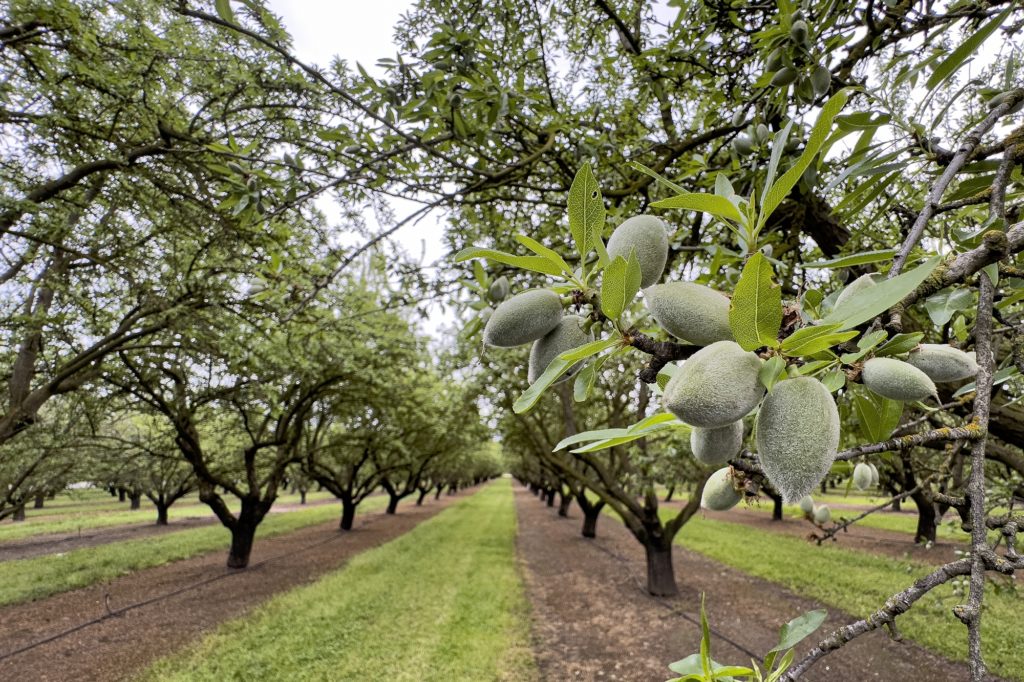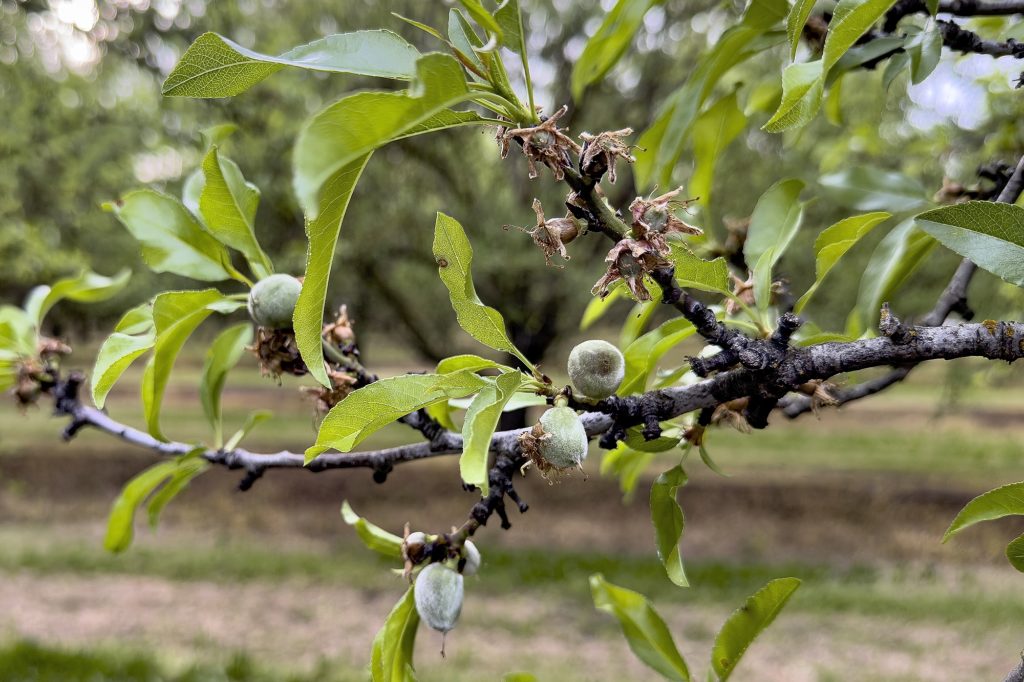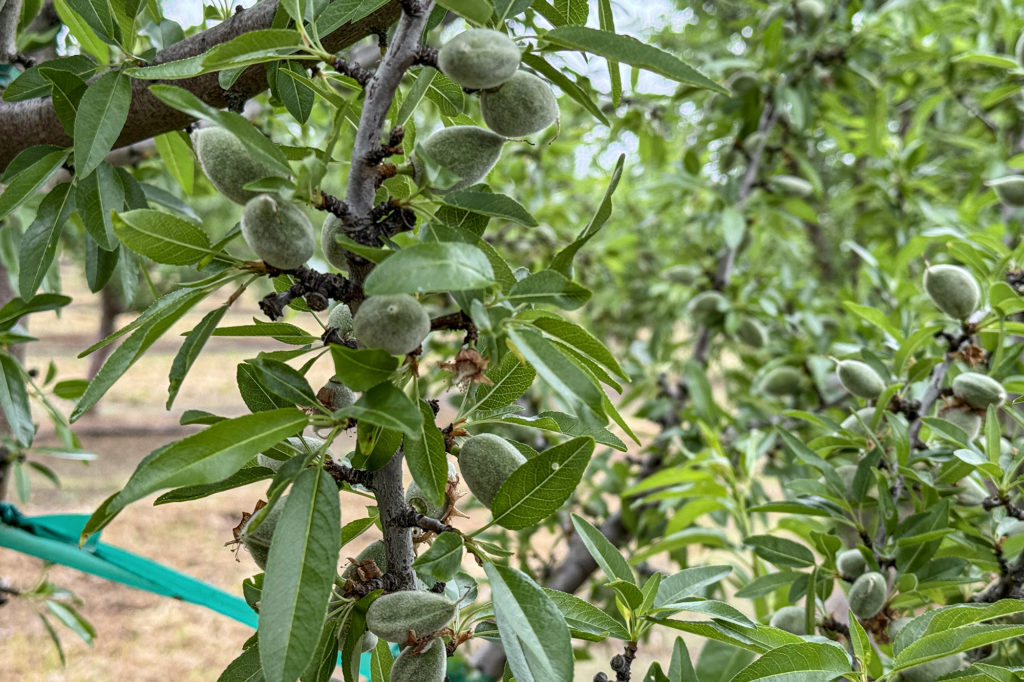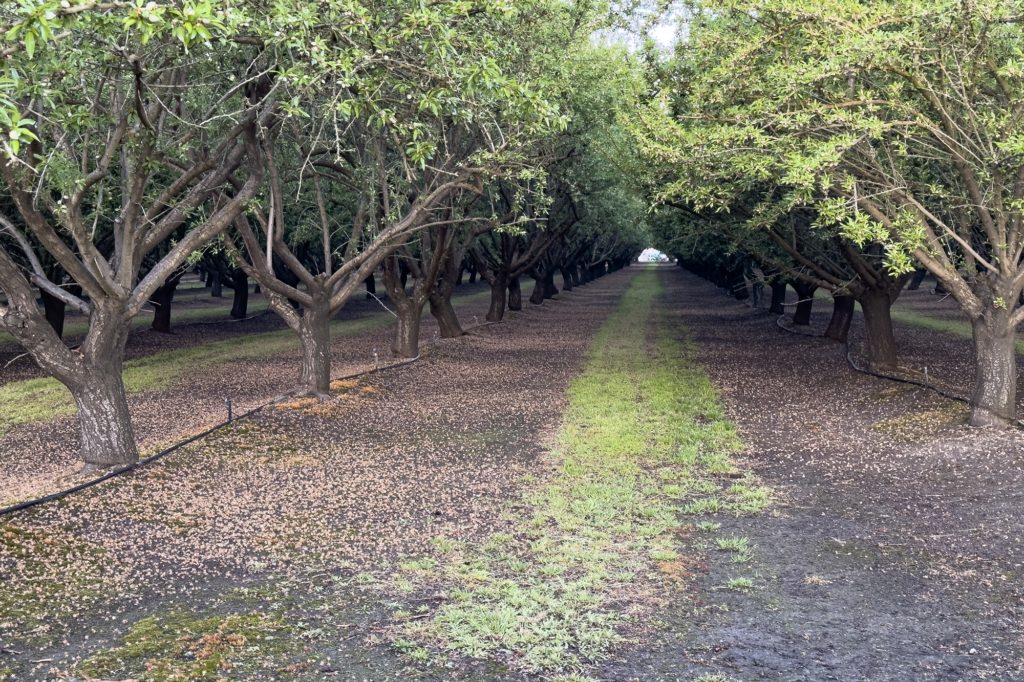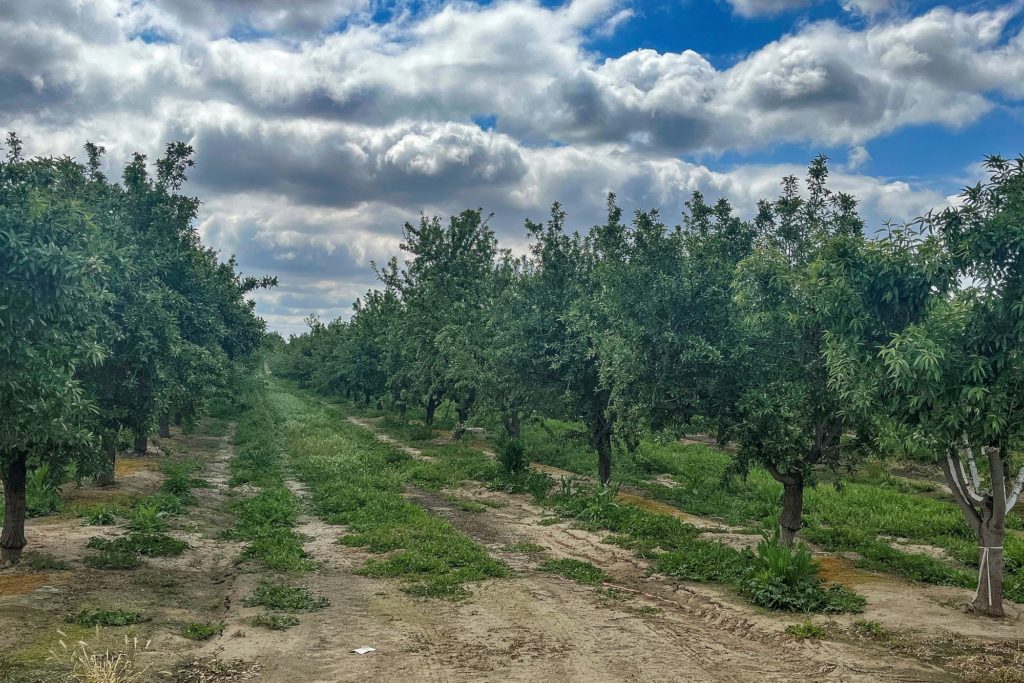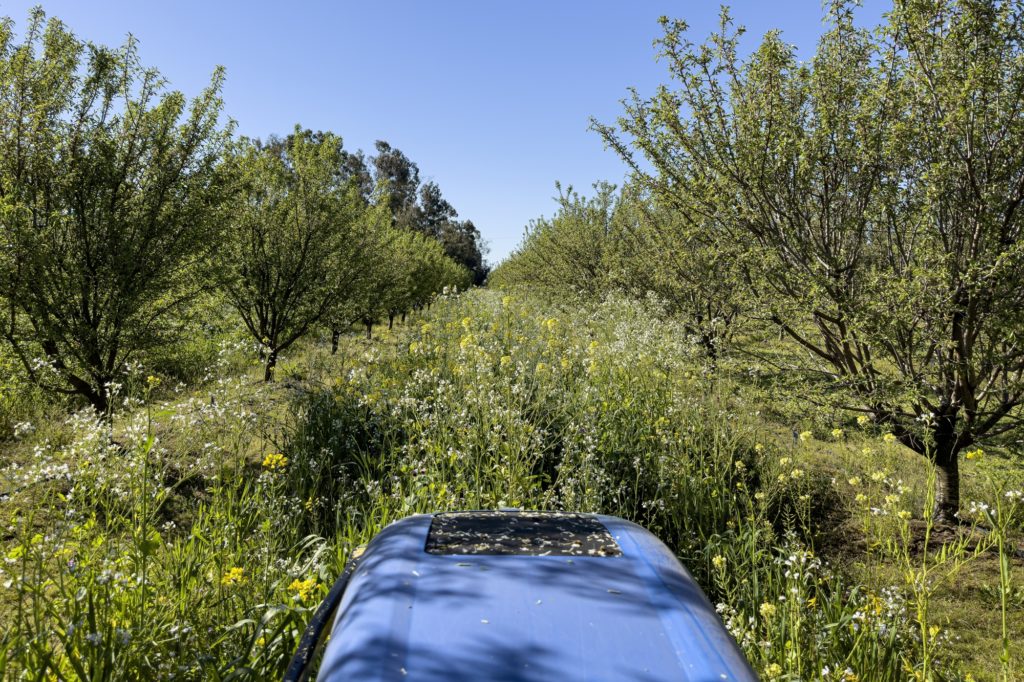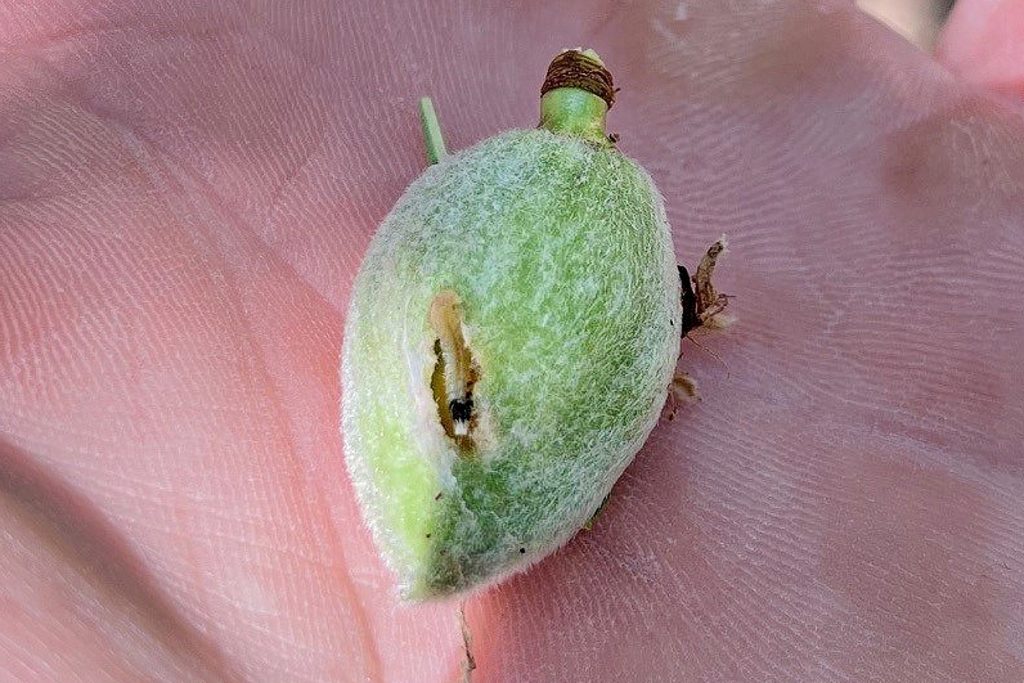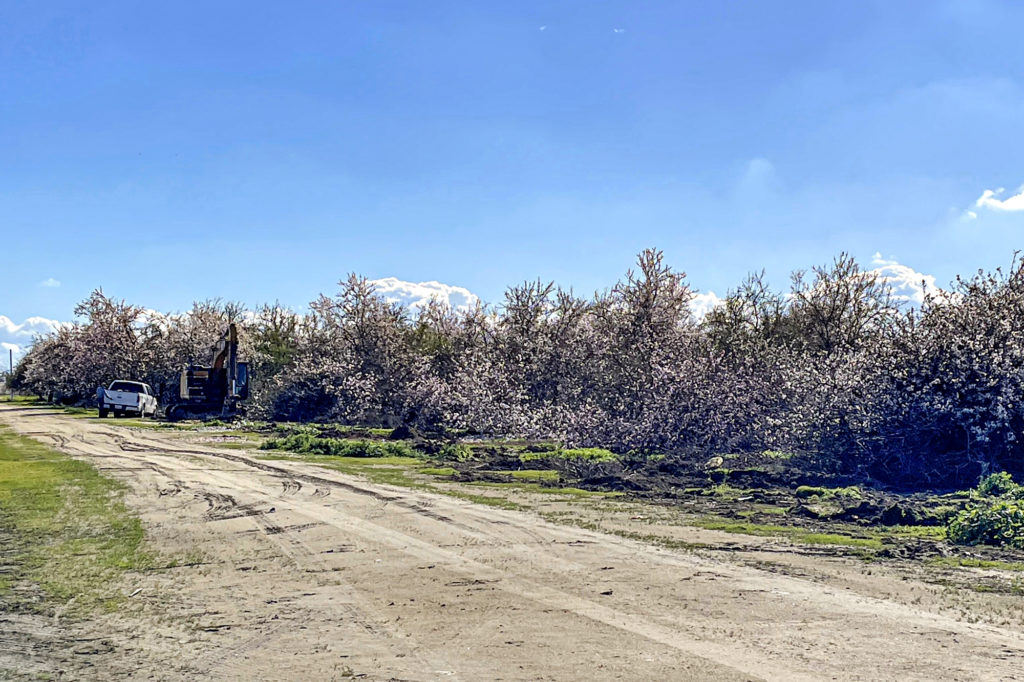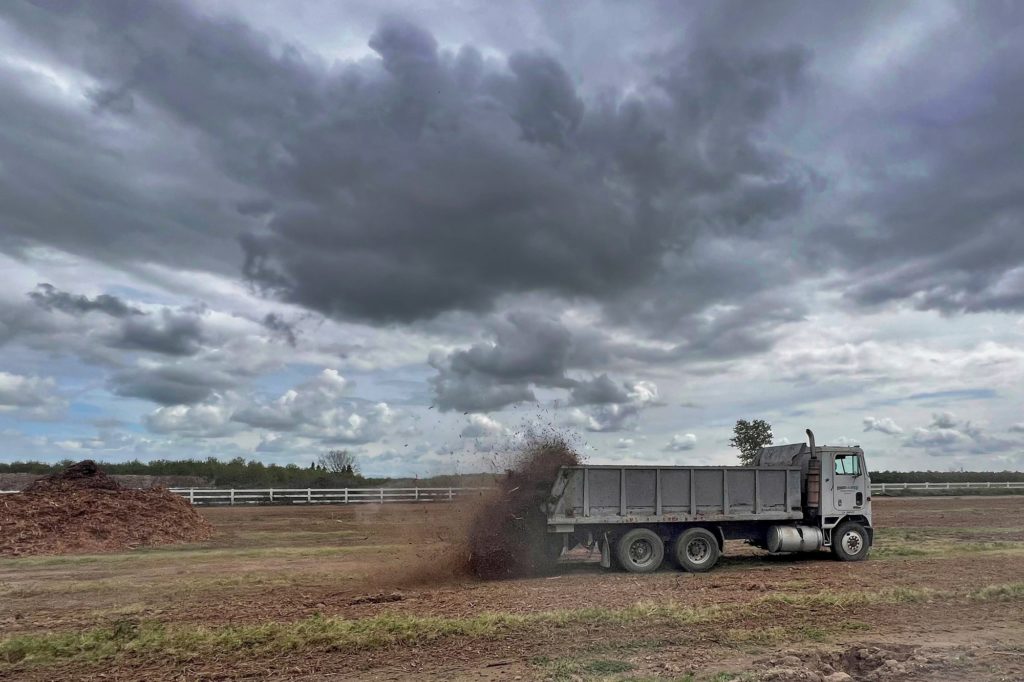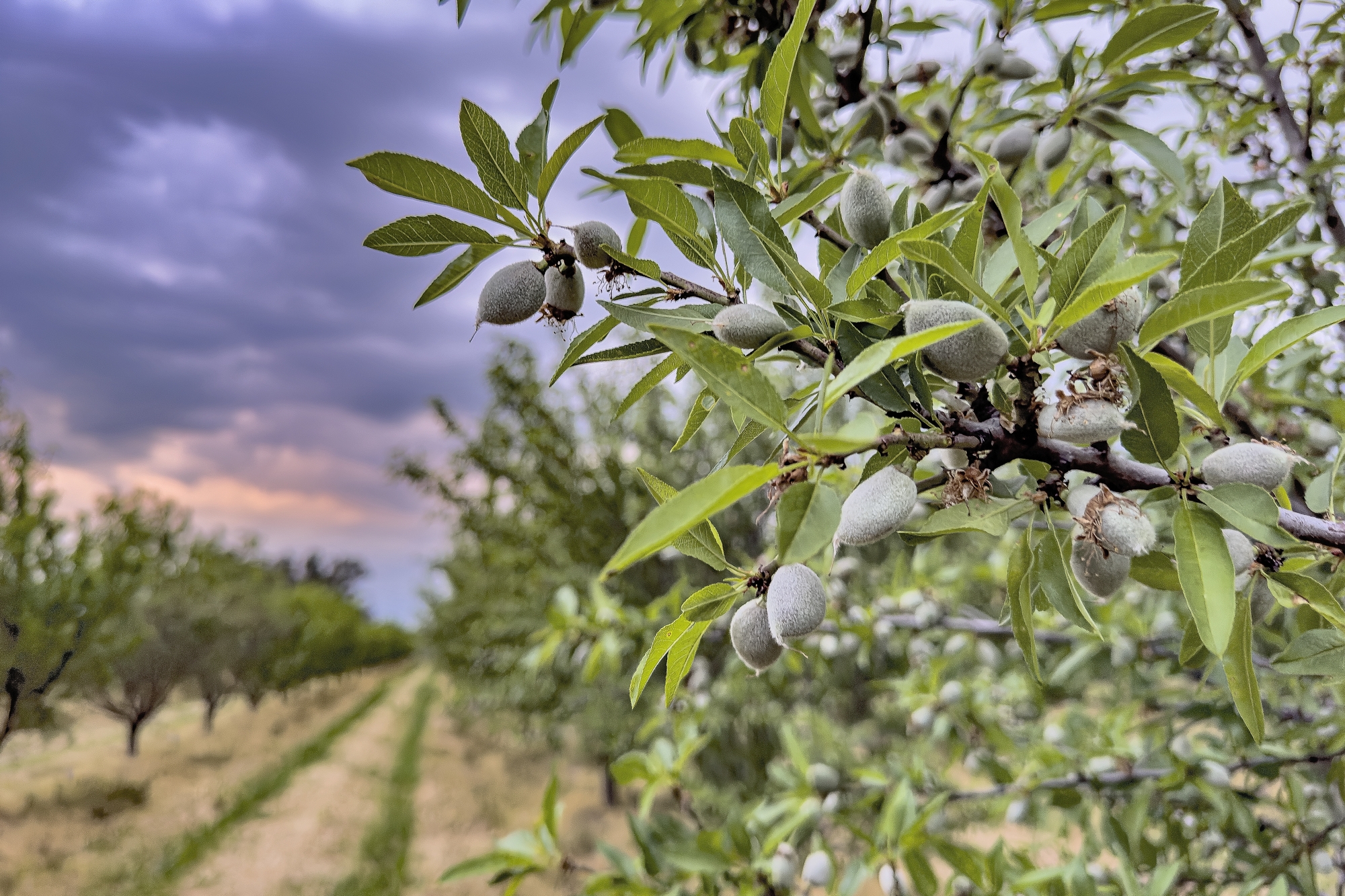
This report covers the conditions and activities observed from Saturday, March 16, 2024, through Sunday, March 31, 2024. The next scheduled report will be posted on Monday, April 29, 2024. In the event of any significant occurrences prior to that date, this site will be updated as soon as possible.
Mild temperatures and variable skies dominated the weather over the Central Valley during the latter half March, providing generally good conditions for the development of the 2024 crop. Temperatures were widely reported at normal to slightly above seasonal normal levels, with daily maximum values reaching well into the 70’s during the first week of the period. Maximum temperatures dipped slightly into the mid-60’s and lower 70’s during the final week of the month, as rainfall returned to the Valley. Morning lows were widely reported in the low to mid 40’s with only a few locations reporting readings in the upper 30’s. Rainfall totals reported during the latter half of the period reached their greatest levels in the northern San Joaquin Valley, where from 0.5 to 1.5 inches of rain was received. Meanwhile, total precipitation amounts ranged from 0.2 to 1.2 inch in the Sacramento and southern San Joaquin. There were also isolated reports of small hail in some areas of the San Joaquin Valley, but no widespread damage has been reported.
Growers and observers are reporting good crop development in all areas in spite of the unsettled weather experienced over the past two weeks. Driven by relatively warm morning minimum temperatures, warm enough to eliminate the risk of frost, nuts on all varieties have been breaking free of their protective jackets and growing in size. As may be observed in the photos accompanying this report, nuts are segregating in size, with the largest destined to be retained to harvest and the smallest being shed from the trees. This natural segregation eliminates flowers that failed to be fertilized during the bloom, as well as smaller nutlets in competition with larger ones that were fertilized earlier in the bloom. As much as 60% to 80% of the flowers and small nutlets are shed from the tree during this process. A second “shed” will occur over the coming weeks, as the trees eliminate the nuts they are unable to carry to maturity.
As beekeepers remove their hives from the orchards and travel to the next crop or return home, grower’s efforts during the post-bloom period are largely focused on supporting the developing crop. While it’s early in season, nuts have developed enough that growers have begun to evaluate the potential of their 2024 crop. Many are reporting variable crop sets, based on the proportion of the larger sized nuts they see within the canopy. As noted in previous reports, growers have been watching their production costs closely and many withheld, or limited, end-of-season fertilizer applications after the 2023 harvest. Observers have noted that some orchards have a definite pale color, betraying a lack of sufficient nutrition. Several local irrigation districts initiated their delivery season during the period, and while most orchards have not yet needed irrigation, many have been designed to receive their fertilizer material through the irrigation systems, the most efficient means of distribution. Thus, many growers ran their systems only long enough to apply the desired amount of nutrition and carry the material into the root zone.
Growers sourcing their irrigation supplies from the federal and state projects have expressed frustration with the current allocations, given the ample snowpack and reservoir levels. The federal Central Valley Project allocations to south-of-delta contractors have been set at 35% of contracted amounts. North-of-delta contractors will receive 100% allocations. Friant Division Class 1 contractors will receive 65%, while Class 2 contractors have no allocations at this time. The State Water Project has established their allocation at 30%. Growers are hoping the final allocations for 2024 will increase. Final allocations are typically released in late April.
The rainfall received this year, combined with the “warmer” temperatures during the period have increased the risk of fungal infections and the potential for crop loss. Observers are reporting that growers made at least one treatment to control flower infections during the bloom and following removal of the bees from the orchards, most have followed up with treatments to protect the developing nuts from shot hole, jacket rot and green fruit rot. Foliar fertilizer materials are also included in these treatments, designed provide additional support to the crop.
Several observers have reported the presence of Oblique-Banded Leaf Rollers feeding on the developing nuts. While not an “every year pest” the small larva can kill an impressive number of nuts as they shed their jackets. Some in the southern San Joaquin Valley have also noted the presence of Brown Almond Mite and are monitoring the populations closely.
For many growers, the interval of the bloom-time storm systems made it difficult to send mowers into the orchards, allowing cover crops and orchard weeds to grow excessively. As a result, observers are reporting a number of “shaggy” orchards around the Valley. Many with orchards planted on well drained soils were able to take advantage of the weather early in the period to mow down vegetation and apply treatments to control weed growth within the tree row for the balance of the growing season.
Observers have reported that orchard removal operations have continued throughout the Central Valley. Equipment can be seen pulling and grinding trees, then spreading chips or shredded material across the fields. These operations will continue throughout the year, as will planting of replacement orchards using potted trees.
By Mel Machado, Vice President of Member Relations
Photos By: Christine Ivory, KC Clendenin, Trent Voss, Anthony Scudder and Mel Machado

